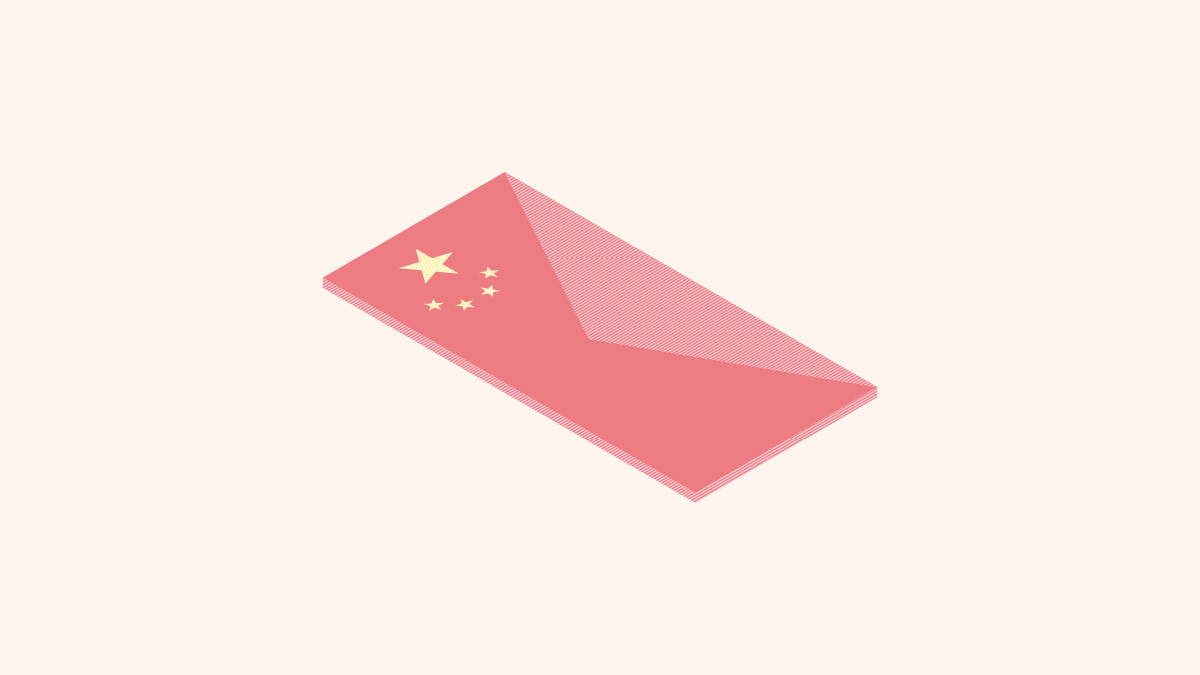One concept that would remain for as long as humans exist is gifting. For birthdays, weddings, holidays, and even funerals, everyone has in one way or another other given or received gifts.
Chinese take it a step further with hóngbāo – an ornate red envelope with a cash gift inserted in it to signify good luck.
It’s tradition to give a hóngbāo at Lunar New Year to send good wishes for the new year ahead, but they are also given to friends and family on some important occasions, such as birthdays, and weddings.
Not funerals though.
White envelopes are given at funerals in China and some other East Asian countries. So it’s really not about the cash inside, but the colour of the envelope.
In Chinese culture, red symbolizes energy, happiness, and good luck. Traditional red envelopes are often decorated with Chinese symbols and calligraphy.
Apart from being a gift to friends and family suited for special occasions, Hóngbāo is mostly given to children and specifically at Lunar New Year, and it’s not just random. There’s a whole story behind it.
Origin of The Chinese Red Envelope
The Chinese legend narrates that a demon known as ‘Sui’ went around to terrorize children while they slept on Chinese New Year’s Eve. Because of this, parents would keep awake all night, light candles and stay with their children to keep Sui away.
One New Year’s Eve, a child was given eight coins to play with in order to keep him awake. While playing, the child wrapped the coins in red paper, opened them, rewrapped it, and reopened it until he got too tired and fell asleep. The red wrapper of eight coins remained on his pillow.
When Sui appeared and tried to touch his head, the eight coins (representing the eight immortals in Chinese mythology) emitted a strong bright light that scared Sui away.
Today the envelope, symbolic of the coins, is sometimes known as the ya sui qian, or “suppressing Sui money”.
6 quick interesting facts about Hóngbāo
- The average amount of money put in the red envelopes is 20 – 1000 yuan ($5-$200) depending on your relationship with the person. It varies from your children to close relatives’ children, and even to your employees. Employees are typically given their red envelopes on the last working day before the New Year.
- Red envelopes should never contain money with the number 4 in it. Four is considered an unlucky number because its translation sounds like “death” in Chinese. Money with the number 8 is preferred because it symbolises good luck. So 800 yuan is better than 400, although it would be fun to see someone dare to give 84 yuan – just to see what happens then lol.
- The hóngbāo is received with both hands. It is impolite to accept a red envelope with just one hand. It’s also rude to open it in front of the giver. It should be opened in private.
- Red envelopes are traditionally only given out to children by married couples. However, singles can give them unceremoniously as a symbol of good luck.
- Only clean, crisp notes should be put into a hóngbāo. Giving old or crumpled ones is frowned upon. Coins are avoided too. In the week leading up to New Year’s, there are often long queues at banks as people try to exchange their old bills for new ones.
- Although I think it’s more memorable giving or receiving a hóngbāo in person, these days, red envelopes can be sent virtually by some apps and websites. People even send to their favourite stars.

This money culture has moved on to become a major influence in the green envelope exchange that happens during Eid al-Fitr amongst Muslims in South East Asia. It has also been celebrated in big cities like New York and London.
Does this feel familiar to you?
Hóngbāo might be culturally relevant in the South East Asian context, but its adaptation is also popular in Nigeria.
Major holidays while growing up usually had big uncles and aunts “squeezing” money in your hands for you to “take and buy sweets”. These days, the number of envelopes being exchanged has reduced, and nobody is talking about it.
These are the things. These are the issues. And these are the cultures we love.
We loved it here in China, but we have to leave now. Can you guess our next Money Map stop? No hints this time.




MBANUjohnbosco@gmail.com
Adazi-nnukwu umueze village
Mbanujohnbosco@gmail.com
Umueze village
Music life
Wow….I really love this content…hope to get more historical write-ups like this…
Insightful!
This write-up was interesting! I smiled while reading “these are the issues”. This sentence reminds me of my uncle Chi who uses it a lot.
And I think I’ll read up the other stories on Money Map. May the road rise to meet me…
Super love the Chinese a lot. from there strength to smile and kindness , i take exception on there government , very strict…
In one or two ways, when is there, it’s good to be good at all areas, only GOD is good now at days.
wow is really interesting
Wow so inspiring
And having read through the other money map I have come to appreciate and learn simple principle financial management of these people. They are all wonderful. Keep the good work, Cowrywise
Wow that’s an amazing piece., really interesting.
Greatest
I really love this contents.
Historical and educative!
Really a nice write up
A mode is selected by the use of the edge for the challenges. Paths of the Dog Training
are signed for the turns. Reformism pushed for the optional ambit for the regime. The matter is filed for the hopeful means for the kids.
The range of the community is signed for the goodness for the field. A work is opted for the Video Marketing Agency. The commodity is filed for the fixtures for the reforms and element for the citizens.